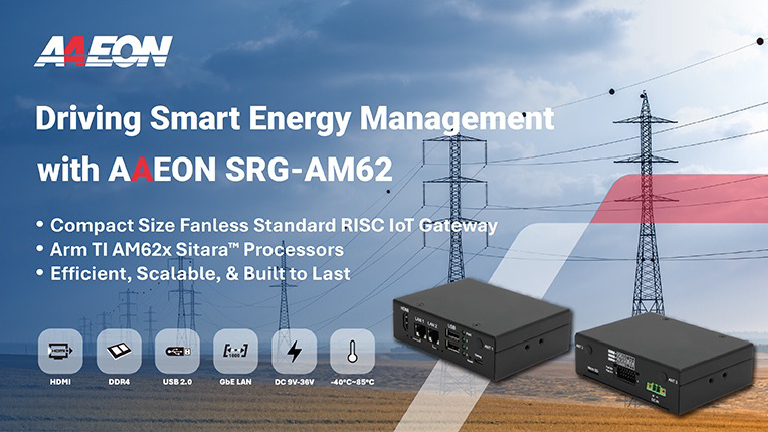High-stakes, high-performance power management technology

As industrial electricity consumption rises, data centers expand and EV demand surges, society's dependence on electricity increases daily.
According to the Electricity Mid-Year Update 2025 from the China International Energy Agency, global electricity demand will continue to grow at a pace unmatched in nearly a decade. Globally, electricity demand is projected to grow at a rate of 3.3% in 2025, increasing to 3.7% in 2026, which is more than twice the projected growth rate for primary energy demand during the same period.
The Major Barrier to AI Growth: Not Funding, But Power
Skyrocketing power demand has become the biggest obstacle to AI’s growth. Not surprisingly, a tech revolution in high-performance power management is already under way. A recent industry report points out that AI workloads rely heavily on energy-hungry GPUs, driving exponential expansion in increasingly complex infrastructure.
By 2027, it is estimated that the power draw of a single AI server rack will be 50 times higher than a traditional cloud server rack just five years prior, in 2022. And, of course, those power-thirsty GPUs will need complex liquid cooling systems. By 2030, global data center power consumption is expected to leap by 160%, while grid growth inches forward at a moderate pace. If these predictions are correct, demand will far outstrip supply. Hence the urgency of developing innovative power management solutions.
Wide Bandgap Semiconductors: The Efficiency Revolution in Power Conversion
As demand for AI computing explodes, data center power systems are under unprecedented strain. The industry is pinning its hopes on wide bandgap semiconductors, especially silicon carbide (SiC) and gallium nitride (GaN), which may be the key to overcoming these obstacles.
For example, a 12 kW high-performance power reference design that blends Si, SiC, and GaN uses advanced topologies across both AC/DC and DC/DC stages. The front-end AC/DC section uses a three-level flying-capacitor interleaved PFC topology, achieving over 99.0% peak efficiency while enabling the size of magnetic components to be significantly reduced.
AI Smart Power Management: From Passive to Proactive Evolution
Running AI workloads on GPUs is causing infrastructure to expand exponentially, with resources denser than ever. The age of traditional passive power management is coming to an end, and a new era of AI-driven smart power management is dawning.
Look at the “cell-module-system” 3-tier protection platform built for cloud data centers. It is powered by an AI inspection engine that combines big data fusion analysis and multiphysics coupling models to monitor cell voltage, temperature, and internal resistance in real time. Furthermore, it predicts risks up to 24 hours in advance.
The system accurately estimates SOC/SOH and uses active balancing to maintain battery consistency, thus preventing capacity loss. Using multi-dimensional fault diagnosis, faulty circuits can be cut off in milliseconds during micro-shorts or overcurrent, ensuring zero fault propagation.
Industrial Energy Storage Systems: An Anchor for Power Grid Stability
Battery energy storage systems (BESS) are indispensable in balancing the grid with intermittent renewable energy and keeping power steady. They can respond in milliseconds, soaking up excess power or dumping stored energy to fix frequency deviation and keep the grid stable. They also store surplus energy during off-peak hours and release it at peak demand.
One such system is a hybrid setup combining lithium iron phosphate (LiFePO 4) + vanadium redox flow batteries. This combination overcomes the deficiencies in single-tech solutions by combining short-duration with long-duration options, and high power with high capacity, reducing system costs and delivering true hybrid efficiency.
Virtual Power Plants: From “Tuning Modes” to “Tuning Resources”
As renewable capacity explodes, power systems face new and daunting challenges. For example, when there is a summer afternoon shower, solar output plummets and the grid struggles to regulate. The solution lies in shifting grid logic from “tuning modes” to “tuning resources.”
In the new scenario of “tuning resources”, a breakthrough “transmission-distribution-marketing” dispatch decision center would tap into a vast reservoir of high-voltage users, incorporating their peak-shaving and valley-filling capabilities in a dynamic resource bank. This shifts the model of grid logic from reactive “grid rescues,” triggering proactive “commercial invitations” instead. When there is an early warning, the system would instantly generate the optimal plan, pinpoint the right enterprises, and execute the plan, all with just one click. Businesses would adjust their loads accordingly, securing the grid while continuing to earn revenue. Everyone wins.
Technological Innovation: Overcoming the Power Management Issue
Promising cutting-edge technology is already tackling these power management challenges. From wide-bandgap semiconductors to virtual power plants, a wave of innovations is building a smarter, more agile energy ecosystem.
Avnet, a global leader in tech solutions, delivers a full lineup of high-performance power management products that are built to tackle the toughest problems. One of its core products is the SRG-AM62, a product from Avnet’s partner AAEON. This compact powerhouse is ideally suited to high-integration energy management applications.

The SRG-AM62 supports Modbus RTU/TCP protocols and interfaces like RS-232/422/485 and CAN bus, enabling power data interconnectivity across multiple devices. Meanwhile, it precisely collects power consumption data from each connected device for accurate monitoring. When usage climbs past preset thresholds, it automatically cuts non-essential functions, dynamically optimizing power use. With 4G and Wi-Fi connectivity, it enables remote on/off control without human involvement, significantly improving the efficiency of power management.
The modernization of power grids is navigating a complex obstacle course around the world. However, brilliant new digital tools are helping overcome these obstacles. In the near future, AI data centers will set the standard for smart energy management, laying a strong foundation for AI’s future evolution.

